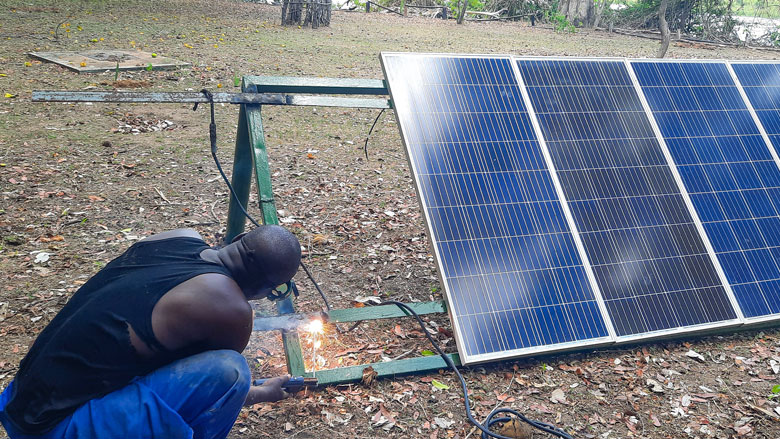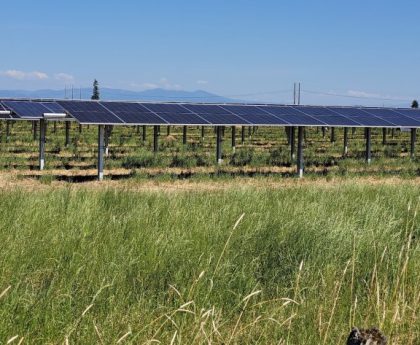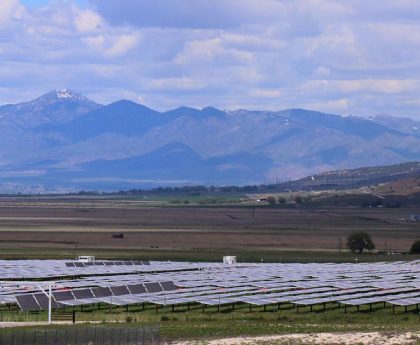Her access was thanks to a subsidized solar powered lighting system package known as Biolite, distributed by Yellow Solar Company which is one of the five solar companies participating in the Fund that is being administered by the Ministry of Energy. Others are Zuwa Energy, Green Impact Technologies, Vitalite, and Star Times.
Interestingly, Soko’s system has an added feature, a built-in FM radio, that she can listen to at any time, thanks to the power provided.
“Biolite package is a fast-moving product in many villages here because of its price and the added accessory, the radio,” says Ungopanga Kanyemba, a sales agent for Yellow Solar in Chiradzulu who markets the products in three traditional authorities in the district.
“From November 2023, when we started selling these packages under the Ngwee Ngwee Ngwee Fund, more than 50 households have benefitted, and the demand is increasing every day,” he says.
The reduced cost of solar electricity has made the package affordable, and customers have options. They can pay upfront for the Biolite package, at a cost of $58 which is about $10 lower than the market price of the product. Others also opt for monthly installments at a discounted price.
Junior Kalata from Sasu village is relieved and says that he no longer must pay for charging his phone at a marketplace because the new solar facility he installed at his house has the ability to charge his mobile phone and that of his wife, Charity.
“I also no longer spend money to buy batteries for my torch from the time I installed the solar facility,” said Kalata, as he smiles inside his small but decent iron sheets roofed house.
Such stories of transformation are becoming common in many communities in Malawi.
Akimu Nasiyaya, from Namputu village in Mulanje district, also says he used to light his house using an old car battery, which was frequently drained as it also had to power his radio and a small sound system. He needed to recharge it constantly.
“I can listen to music for hours now using the car battery since it is no longer used to power lighting of the house because I now installed the solar powered lighting,” says Nasiyaya, a security guard, as he smiles.
Nasiyaya benefitted from the same Ngwee Ngwee Ngwee Fund mechanism in early February this year, though through a different company, Zuwa Energy.
Supply Chirwa, Mulanje District Sales Officer for Zuwa Energy says that on average, they sell the solar package to 50 households every month.
Increasing electricity access through the Malawi Energy Access Project
The 2019 ambitious $100 million Malawi Energy Access Project (MEAP) aims to fast-track electrification efforts and provide electricity access to approximately 1.9 million people, constituting 9.5% of the population.
So far, more than 140,000 households have been connected. This is about 3.5% of the population provided with access in the past 12 months, bringing the total access rate in Malawi to around 23%, up from 19%.
The target is to give access to 180,000 on-grid households and 200,000 Off-Grid households by the end of June 2025, translating to an additional 1.9 million people having access to electricity. These additional households will bring the total access rate in Malawi to around 28% by June 2025.
The on-grid connection rate achieved over the past 12 months of 70,000 has been the highest in the history of the country, since previously ESCOM could only manage a maximum of 30,000 connections per year.
“The off-grid access rate has been on an exponential trajectory ever since this access sector picked up some seven years back through other similar development partner-supported access initiatives, and the MEAP is building upon and scaling up on this foundation to support the Government Malawi 2063 Vision Access Target of 50% by 2030,” says Michael Gondwe, Senior Energy Specialist at the World Bank.
He says that off-grid access, which is simpler to roll out and lower in cost, is critical in Malawi owing to the large percentage of the population located in rural areas, where the electricity access rate is very low (around 4% at the start of the MEAP) and the on-grid penetration is limited and takes longer and needs substantial capital to expand.
Solar home systems might be considered “kick starters” towards electricity access because they can only support limited lighting and some basic functions like mobile phone charging and radio. Those currently connected might eventually want to migrate to either bigger systems or to the national grid. Nonetheless, such basic access for now is transformational to the lives of the people like Nasiyaya, Kalata, Soko, and many others.
For Malawi, Off-Grid access plays a very critical role in rapidly scaling up electricity access in many households that are far from the national grid and where affordability remains a challenge.
This post was originally published on 3rd party site mentioned in the title of this site





